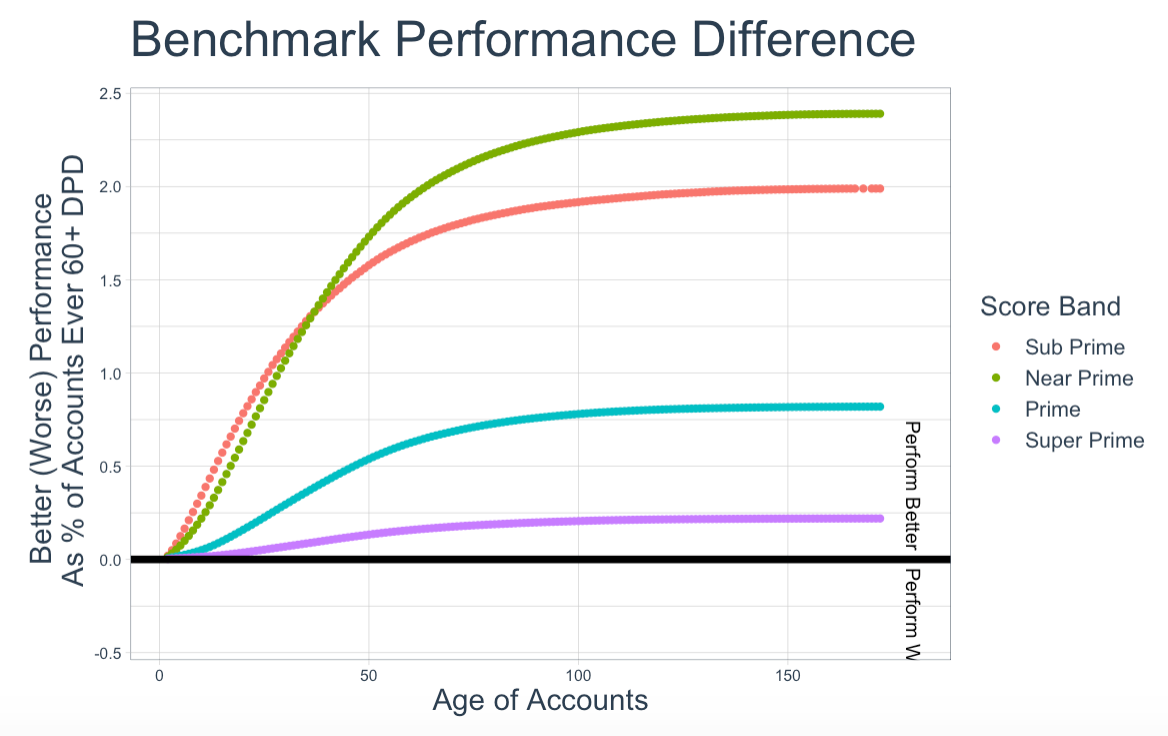Risk Management
Compare the behavior of your accounts to an 'apples-to-apples' group by major dimensions such as credit score, product, and channel
Key Metrics by key segments:
Unit and dollar delinquency and loss rates
Average outstanding balance
Vintage analysis


